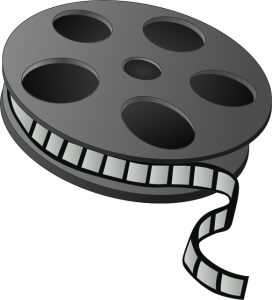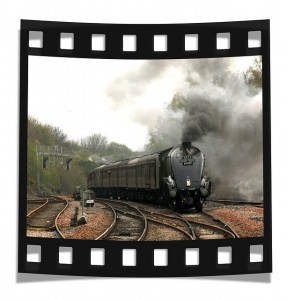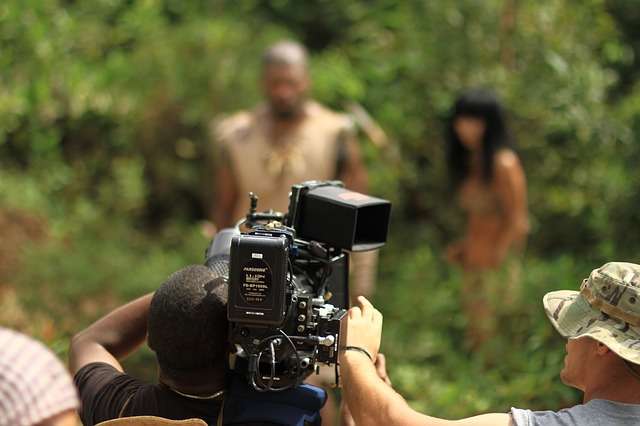Modern film and movie theories. Theater theories. What is postmodern film or theater or postmodern art. Explanation.
To understand or explain modern movies we will at first have a look at some general ideas of modern movies with the following article. If you read all movie explanation articles above starting with this article called Film Theories you will win a major understanding on modern movies (so bookmark this page).
These are four chapters about understanding modern film, movies or theater. This is about postmodern movies, film or theater. That means understanding modern film in general. This page is for people who are interested in tv and movies(or theater). It is a little complicatet but if you want to make movies or any art it is very useful. This article is about theorie of modern film-making.
Understand modern movie making
If you would study film at a college then there is a good chance that the teachers there will call your lessons performance studies. The most important theorie-complex behind modern movies is this performance studies. I tell you if you really want to understand modern movie making we have to understand first what performance studies is. Because that is the theory of modern film.
What is performance studies?
Performance studies is a theoretical framework how to understand film itself. To understand it first of all we must understand what “to perform” means? To perform means “to do work”, “to achieve something by doing something”. Also to perform means to do something on a “stage” in front of an audience. In performance studies both meanings are of importance. It is believed that the “actor” achives something in the viewer by the “movement” that he makes. This can be a direct effect for example that the viewer is proud or afraid, or it can be a more indirect effect that the viewer gets to thinking about stuff. The main aspect here is to understand that the viewer is moved somehow by the events that he sees.
 Performance studies is not only a theoretical framework to understand film. it also is a framework for theatre, performance art, radio, internet… . In other words a modern understanding of everything that is performed in the sense of being shown to an audience. Modern movie and theatre science calls all those things “performances”. A movie is a performance, a play performed in a theater is a performance. Seen from this point of view even a board game is a performance for it is an “artistically” styled instance that has an effect on the viewer(in this case the participant). In this wide-angled view also a painting or a photograph is a performance since it effects the viewer and a human being has styled the painting for example to have a certain effect on the viewer.
Performance studies is not only a theoretical framework to understand film. it also is a framework for theatre, performance art, radio, internet… . In other words a modern understanding of everything that is performed in the sense of being shown to an audience. Modern movie and theatre science calls all those things “performances”. A movie is a performance, a play performed in a theater is a performance. Seen from this point of view even a board game is a performance for it is an “artistically” styled instance that has an effect on the viewer(in this case the participant). In this wide-angled view also a painting or a photograph is a performance since it effects the viewer and a human being has styled the painting for example to have a certain effect on the viewer.
So performance studies is a framework to see film and theater from a special angle. In performance studies each of these things like a movie or a theatrical play is called a performance. In the view of performance studies actually any artistic rendering is a performance. And performance studies is studies of these performances. And performance studies is also the study of the performance(the work done) of these performances(like film). How does a performance perform? that is the question of performance studies.
I said performance studies is a framework. That means it tells you to think about a movie for example in a certain way. One of the main ideas how you have to think about a movie in performance studies is always to look for the effect of the movie it has on the viewer. Performance studies is looking for how a given performance effects the viewer and what is used in the performance to have an effect on the viewer and how it is used. Performance studies says that every single thing that happens on stage has an effect on the viewer. Every thing that happens on the stage performs that means it does work on the viewer. And of course some things that happen on stage or in a movie have a combined effect on the viewer. In performance studies the single effect is of much worth. From all and all the little single effects a movie consists of you build the complete movie. So the movie is actually seen as a series of very many effects that can also mix to combined effects: like every single scene and every single light and every single color. So the completeness of a movie is something that can tendencially be neglected in a modern movie. While of course the effects that come from the end of a great story for example are of course also effects. And so performance studies also encourages the use of effects like a good story.
That means it tells you to think about a movie for example in a certain way. One of the main ideas how you have to think about a movie in performance studies is always to look for the effect of the movie it has on the viewer. Performance studies is looking for how a given performance effects the viewer and what is used in the performance to have an effect on the viewer and how it is used. Performance studies says that every single thing that happens on stage has an effect on the viewer. Every thing that happens on the stage performs that means it does work on the viewer. And of course some things that happen on stage or in a movie have a combined effect on the viewer. In performance studies the single effect is of much worth. From all and all the little single effects a movie consists of you build the complete movie. So the movie is actually seen as a series of very many effects that can also mix to combined effects: like every single scene and every single light and every single color. So the completeness of a movie is something that can tendencially be neglected in a modern movie. While of course the effects that come from the end of a great story for example are of course also effects. And so performance studies also encourages the use of effects like a good story.
 But since the story just has effects on the viewer, just like the colors and everything else that is in the movie the story is not seen as the main thing of a movie anymore. One big aspect of performance studies is to understand that the story of a given performance lets say the script of a movie is not the main aspect of a movie because many other things in the movie have an effect on the viewer. For example the specific person playing the character, the colors that are seen on the screen, the speed of the cut, the lighting… . The overaching story interacts with all scenes so we not only have to ask what “direct” effects has the seeing of that particluar scene on the attitude of the viewer. We also ask which effect does a particular scene has because of the surrounding story.
But since the story just has effects on the viewer, just like the colors and everything else that is in the movie the story is not seen as the main thing of a movie anymore. One big aspect of performance studies is to understand that the story of a given performance lets say the script of a movie is not the main aspect of a movie because many other things in the movie have an effect on the viewer. For example the specific person playing the character, the colors that are seen on the screen, the speed of the cut, the lighting… . The overaching story interacts with all scenes so we not only have to ask what “direct” effects has the seeing of that particluar scene on the attitude of the viewer. We also ask which effect does a particular scene has because of the surrounding story.
So story becomes overall not the driving force of a movie anymore. Instead the movie becomes a collection af things that are “seen” and therefore have an effect on the viewer. Even the story is now just one of the things that can be “seen” in a movie and that have a certain effect on the viewer.
A movie is seen as a collection of effects and the story is one of these effects. Other effects are colors, people, cut, objects, landscapes…
These effects are now seen as effects on the viewer. But they are seen as effects not only on the mind but also on the body of the viewer.
In earlier times the focus of thinking scientifically about theatrical effects was: What do we learn from this particular play? How does this play change our minds?
Today we ask how does the play/movie change our minds and how does it change or body posture?
How do the things seen in a movie or other performances effect the thinking, believing and the movement and posture of the viewer from effect to effect and with mixed effects.
Well actually theater of all times was planned on effects on the body. But performance studies wants to point that working with effects out clearly in order to have a good understanding of movies or other performances.
 In performance studies the posture of the body of the viewer is considered more than just an accidental posture. In performance studies you work with the idea that every posture of the viewer is part of his being, because the posture of the body effects the universe and society around the person and has an ingoing effect on the person itself. So performance studies looks for effects on the viewers mind and body posture. An effect on the body you can have in every scene also without an overarching story. So in this view an action movie becomes a completely valid form of movie-making because it has effects on the viewers body posture. The aim of these effects of course is to give the viewer benefits. To make the posture the viewer takes on if he/she sees the events of the movie is something he profits from.
In performance studies the posture of the body of the viewer is considered more than just an accidental posture. In performance studies you work with the idea that every posture of the viewer is part of his being, because the posture of the body effects the universe and society around the person and has an ingoing effect on the person itself. So performance studies looks for effects on the viewers mind and body posture. An effect on the body you can have in every scene also without an overarching story. So in this view an action movie becomes a completely valid form of movie-making because it has effects on the viewers body posture. The aim of these effects of course is to give the viewer benefits. To make the posture the viewer takes on if he/she sees the events of the movie is something he profits from.
So a scene completely without story is also something valid that can be used in a performance studies driven movie. Or you could also say a postmodern movie because performance studies is the theorie of postmodern art.
instead of postmodern movie you could just say very modern movies, because postmodern describes the most modern ideas in “art as it is done today”. In the beginning of the 20th century people called their art “modern art”, Thats why today we call our art that derives from these “modern” ideas and has some more modern ideas as “postmodern art” because post means “after”.
So a movie is now seen as a thing made of single and combined effects on the mind and the body of the viewer. So how do modern movies now play around with these ideas.
Some work-ideas of postmodern movies
Loosening the story
In postmodern movies there is the tendency to let go of the suspenseful plot and make the whole movie not to much driving towards the goals of the characters. The effect is a loosening up of the being dragged into the story and the suspense and what you get from this is scenes that float a little but also give you the possibility to focus on other effect that would otherwise have been subjected by the viewer under the story. Now with a more loose story the viewer has time to focus on the other effects of the scene. For example a special mood, special colors, the physicality of the actor…
Use of the physical body
The physical body and the posture of the body of the actors in postmodern movies is often used as something that the viewer can copy with his own body. But of course the body is also often used in the classical sense as something that brings the viewer to react to it.
Everybody knows it is just a movie
 Not to hide that you see a fictional product is another strategie of postmodern movies. Keeping the premise that it is just a movie gives the author that means the director more freedom in putting in things that are “unrealistic” or do not fit to the story but have an effect on the viewer that the director wants to have.
Not to hide that you see a fictional product is another strategie of postmodern movies. Keeping the premise that it is just a movie gives the author that means the director more freedom in putting in things that are “unrealistic” or do not fit to the story but have an effect on the viewer that the director wants to have.
Also there is a bit of theory that wants to have the viewer knowing that he is still in his room and watches TV. So that he does not get wrapped up by a suspenseful story or mesmerized by the colors and movement but instead experiences the TV and its screen with images at all times as an object that is inside the room where the viewer is. Because so the art product gives the viewer a clear view of the reality of his own position inside of a certain room. It is an idea of emphasizing the viewers reality and not having the viewer inside of a fiction of a movie.
Keep some story
In postmodern movies the story is not gone completely. It is just not the most important thing, to make more space for other things that have effects on the viewer.
The Bond movie “Casino Royal” with Daniel Craig is very postmodern. Notice that this modern action movie is very postmodern which shows us that postmodern describes modern ideas of movie-making and not special very “artistic” and strange movies.
 Later in this movie Bond plays poker and over a quite long time of this pokergame you somehow get the feeling that the story is not going on. That is a very postmodern idea while the story does not go on you get an effect of what is called “static theater”. We just stay in the room and watch while somehow not much does happen. This is a typical postmodern idea to put the story in the background to be able to focus on other effects. Like the characters and a feeling for the situation for example.
Later in this movie Bond plays poker and over a quite long time of this pokergame you somehow get the feeling that the story is not going on. That is a very postmodern idea while the story does not go on you get an effect of what is called “static theater”. We just stay in the room and watch while somehow not much does happen. This is a typical postmodern idea to put the story in the background to be able to focus on other effects. Like the characters and a feeling for the situation for example.
Not much later Bond has to revive himself in the car. We think well he can revive himself because he is James Bond. This breaks the story. We can not believe anymore that what we see is real because it is very unrealistic and makes very clear that it needs the fictional convention that Bond is a superhero. That breaking of the story happens in order to keep the viewer knowing that he is in his room watching tv. To go for real realism by pointing out what is actually real: The situation of the viewer sitting in his room watching a fictional movie on a screen.
We think well he can revive himself because he is James Bond. This breaks the story. We can not believe anymore that what we see is real because it is very unrealistic and makes very clear that it needs the fictional convention that Bond is a superhero. That breaking of the story happens in order to keep the viewer knowing that he is in his room watching tv. To go for real realism by pointing out what is actually real: The situation of the viewer sitting in his room watching a fictional movie on a screen.
You see the story is not gone completely.
I dont like the scene where Bonds wife dies in the end this could have been done much less shocking.
Another movie that I say is very postmodern is the first “Highlander” movie with Cristopher Lambert.
Everything is an effect, and society effects
In performance studies everything is seen as an effect. The story is an effect seen as what it does in the scene. That means: through the connection to the complete story of the movie every scene gets a certain feel and that triggers an effect in the viewer.
Also effects in the viewer are triggered by the lighting, the persons and the cutting frequency for example.
In performance studies the effects on the viewer are not only measured in emotions and feelings and thoughts and opinions that you get by watching a scene. To these things of what an effect can be like now additionaly comes the idea of “society effects”: for example the way of signaling a weaker position. Or the feeling of imagining to be of another sex. Or imagining to be close to a fight. Those typical society effects which are a base experience in life are typical things that postmodern effects try to trigger.
 Game of thrones for example. The scenes are full of agression and tension between kings and queens. And the events place ourselves in this medieval fantasy world in which the king of the terretory you are in could have you killed if he wants to. This has an effect on us. We feel weak and tendentially willing to obey. This is modern thinking, because the show does not try to give us thoughts on how we could style the world, instead it gives us a strong feeling, or as I called it a “society effect” from which we are more easyly able to feel relaxed and do the right thing. So instead of getting us to think about worldly problems modern movie making gets us to be and relive or live certain “states”.
Game of thrones for example. The scenes are full of agression and tension between kings and queens. And the events place ourselves in this medieval fantasy world in which the king of the terretory you are in could have you killed if he wants to. This has an effect on us. We feel weak and tendentially willing to obey. This is modern thinking, because the show does not try to give us thoughts on how we could style the world, instead it gives us a strong feeling, or as I called it a “society effect” from which we are more easyly able to feel relaxed and do the right thing. So instead of getting us to think about worldly problems modern movie making gets us to be and relive or live certain “states”.
So Game of Thrones does not want the viewer to think about violent kings and that this system of force should be objected. Instead it aims for the direct effect you have in feeling subjugated to the king. To bring the viewer into a state in which he is relaxed or tensed in order to give the viever the possibility to use this state of being for the rest of the day. With this you give the viewer a direct effect that gives all his acting and thinking another base, which is the living and moving in the form triggered by this society effect or other effect.
does not want the viewer to think about violent kings and that this system of force should be objected. Instead it aims for the direct effect you have in feeling subjugated to the king. To bring the viewer into a state in which he is relaxed or tensed in order to give the viever the possibility to use this state of being for the rest of the day. With this you give the viewer a direct effect that gives all his acting and thinking another base, which is the living and moving in the form triggered by this society effect or other effect.
So Game of thrones does not want the viewer to think about the things happenig. Game of thrones aims at a positiv effect on the body movement of the viewer while he is confronted with this movie-world.
The result is that watching Game of thrones is somehow fun even if you can not explain why.
The chair
In performance studies any object is said to have an effect on the viewer. So we say a chair performs. It has a certain materiality and a certain form and
 certain things we know about it. It is tempting to think the most important aspect of the chair is what we know about chairs in general. But performance studies tries to point at the other form of performance that each object does and that is the effect on the viewer that comes from the form and feel and how the object is made up and its position in the room and towads other things. So with its being there the chair has an effect. Thats why we say the chair performs. Every object that you can see performs.You notice how the object is and because of how an object is you position yourself in a certain way towards it and that is in performance studies called an effect on the viewer.
certain things we know about it. It is tempting to think the most important aspect of the chair is what we know about chairs in general. But performance studies tries to point at the other form of performance that each object does and that is the effect on the viewer that comes from the form and feel and how the object is made up and its position in the room and towads other things. So with its being there the chair has an effect. Thats why we say the chair performs. Every object that you can see performs.You notice how the object is and because of how an object is you position yourself in a certain way towards it and that is in performance studies called an effect on the viewer.
Seen from this point of course the body of a person already performs before the person does anything. Even in standing still a person performs because the body performs and because of the things we ourselves in our thoughts connect to the body we see.
And then of course the person can start to do something on the “stage” which is then also called to perform.
You can of course ask the question how the chair has an effect because of certain things we know about chairs in general, that we associate to seeing a chair. Sure this is a valid idea and also the question is very valid of course to ask what effect the chair has because of things we have just learned in the movie or theater play, like the chair becomes the symbol for something. And those ideas are not dropped in modern film making. But at first performance studies at the moment points out that the chair or other thing already performs with there form and their color and position . Everything performs that means it has an effect on our thoughts and our posture of the body if we see it.
ask the question how the chair has an effect because of certain things we know about chairs in general, that we associate to seeing a chair. Sure this is a valid idea and also the question is very valid of course to ask what effect the chair has because of things we have just learned in the movie or theater play, like the chair becomes the symbol for something. And those ideas are not dropped in modern film making. But at first performance studies at the moment points out that the chair or other thing already performs with there form and their color and position . Everything performs that means it has an effect on our thoughts and our posture of the body if we see it.
So actors perform even as long a the do absolutely nothing. Their present body performs, has an effect on the viewer.
So also the color and the mood of the scene that you see on the screen performs. Thats why the effect becomes such an important idea in postmodern thinking about art. Thats why the story can be fought back by lets say the other things that a movie consists of. Because all these things have an effect, And all we want to do with the movie is to have an controlled effect on the viewers mind and body. To help the viewer to hold mind and body in a better way.
The next valid question is this: Does an object move us physically into a body form if the object is physically next to us throgh some effect we do not know, or does an object only move us into a body form because we see it and then move ourseves. But first lets talk about body form. With the idea of aiming effects on the body form there is the theory of “better body forms” that I will talk about in the following chapter. The basic idea is that a body form can be better and not so good for either your health, or your society interaction or “cosmically” like with one bodyform you could be more holy and more understanding.
Does an object move us physically into a body form if the object is physically next to us throgh some effect we do not know, or does an object only move us into a body form because we see it and then move ourseves. But first lets talk about body form. With the idea of aiming effects on the body form there is the theory of “better body forms” that I will talk about in the following chapter. The basic idea is that a body form can be better and not so good for either your health, or your society interaction or “cosmically” like with one bodyform you could be more holy and more understanding.
 While this talk about religion is of course valid science if you look at a cultural art as theater or movies or all other arts because arts always aim at helping humans to be the best they can. So thinking about the possibility of a “cosmically” better form that the viewer reaches is a usual theorie in arts.
While this talk about religion is of course valid science if you look at a cultural art as theater or movies or all other arts because arts always aim at helping humans to be the best they can. So thinking about the possibility of a “cosmically” better form that the viewer reaches is a usual theorie in arts.
Because if an object that is styled in a certain way would move you into a body form that is more holy than we would have a way of making art that is really smashing and great.
Thats why performance studies asks the question of the better body form. And also asks about how forcing or at least intuitive is the way we move our body according to the things we see.
For your movie this means the viewer moves his body because of the story, because of the things and people he sees on the screen and the lighting, and because of the actual physical image that the screen actually is. The actual physical image on the screen gets more important if you think about objects forcing or moving people into positions of the body or people getting into positions very intuitive.
 You will not have the same body position in front of a Flatscreen as you will have in front of an old tube-tv. Because it is a completely other physical object. And you will react to the style of the object with your body.
You will not have the same body position in front of a Flatscreen as you will have in front of an old tube-tv. Because it is a completely other physical object. And you will react to the style of the object with your body.
And that standing differently in front of another physical object is a very important point in performance studies, because of course also your movie will give the illusion of objects. And that means the viewer will be moved completely differently on base of the objects in your movie.
On this base the materiality of the objects in your movie like the walls becomes much more important to be considered for the effect of the movie.
Seen from this point the actor is an actor and a physical object. The actor can change his physycal form and with this the way the viewer holds his body posture if he sees the actor. And on the other hand he can make gestures.
Good movement
As I said if you consider physical form as a part of what we are you come to the question: If I can do good things like being nice and caring, is there also a good form? Are there forms that are better than other forms be it in the way I hold my body or be it the shape and color that I give an object?
Are there forms that are better than other forms?
This of course leads to fear that we might miss the good body posture. Believe might improve our body posture but we will never miss anything. You never need to fear that you will have a “sinful” body posture. Better posture is possible that means there is also worse body posture but never body posture will be to bad.
Believe might improve our body posture but we will never miss anything. You never need to fear that you will have a “sinful” body posture. Better posture is possible that means there is also worse body posture but never body posture will be to bad.
As I said thoughts like these in theater and film theorie are is not to religious, theater has always been thinking about the best way of being. Theater has always been and will always be the search for “religion” or lets better say “the best way for us to live”. Thats why we of course look at these things in theater theorie.
Further reading
Read the next chapter on modern movie theories.
If you are very interested in such things the best book I know about this topic is Hans-Thies Lehmann(1999): Postdramatic Theater. But that is a book that one can not simply read. You will have to construct for yourself the meaning of every sentence. But it is worth it in my opinion. I think every person who wants to make art today should read this book. I also think that every person who wants to make art today should read my spirituality section of this page. Because art is something that brings benefits for the viewer. And thats why you must know what is actually good. You will never make great art if you do not have good spirituality, the next chapter will tell you more about this.
this article was about:
Movies theories and tv theories. It was also about modern understanding of tv or movies. Postmodern movie theories and postmodern film theories.


